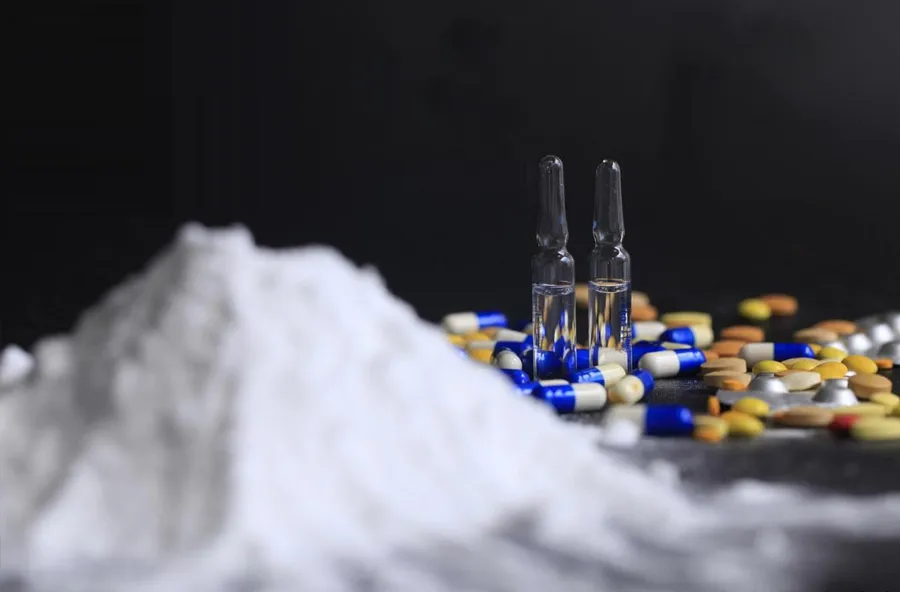Differences between intermediates, APIs, excipients, and formulations
Dec 10,2024

01. Intermediates
Produced in the process steps of APIs, it must undergo further molecular changes or refinement to become a material of APIs. Intermediates are compounds in the process of synthesizing APIs, and are intermediate products in the process of synthesizing APIs. Intermediates are the key products of the previous process of making APIs, which are structurally different from APIs; intermediates are only intermediate products in the process of synthesizing APIs, and they do not need to obtain a document number or a license for the production of drugs;
But the FDA (U.S. Drug Administration) requires intermediates must be registered;
02. API (API)
The correct name should be: active pharmaceutical ingredients, intended for use in the manufacture of drugs in any one substance or mixture of substances, and when used in pharmaceuticals, become an active ingredient of the drug. An API is something that can be used directly to make a preparation. An API is a compound that has been adequately studied pharmacologically and is safe for use in the human body for therapeutic and diagnostic purposes.
This substance has pharmacological activity or other direct effects in the diagnosis, treatment, symptomatic relief, management or prevention of disease, or can affect the function and structure of the body. APIs have to apply for registration with the State Food and Drug Administration (SFDA) in China, FDA in the US, and EMEA in Europe in accordance with the law, and are synthesized in GMP-compliant plants after obtaining an approval number.
The same compounds as APIs that do not have a license number or are not produced in a GMP plant are not APIs.
03. Pharmaceutical excipients
Refers to the excipients and additives used in the production of drugs and the preparation of prescriptions; in addition to the active pharmaceutical ingredients, in terms of safety has been reasonably assessed, and included in the pharmaceutical preparation of the substance.
In addition to excipients, acting as carriers and improving stability, pharmaceutical excipients have important functions such as solubilizing, solubilizing, slow and controlled release, etc., and are important components that may affect the quality, safety and efficacy of drugs.
Commonly used excipients are as follows:
(1) Diluent (or known as filler): to increase the weight or volume of tablets, so as to facilitate the compression of tablets. Such as starch, sugar, microcrystalline cellulose, inorganic salts.
2) Wetting agents: e.g. distilled water, ethanol.
3) Binders: such as starch syrup, hydroxypropyl cellulose, methyl cellulose, hydroxypropyl methyl cellulose.
4) Disintegrant: dry starch, sodium carboxymethyl starch, low-substituted hydroxypropyl cellulose, cross-linked polyethylene pyrrolidone, cross-linked sodium carboxymethyl cellulose, effervescent disintegrant (bicarbonate of Na and citrate, etc.).
(5) lubricant: ① flow aids, ② anti-sticky agent and ③ lubricant (narrow sense) of the general term;
Flow aids are to reduce the friction between particles to improve the powder flow of substances;
Anti-tack agent is a substance that prevents raw and auxiliary materials from sticking to the punch surface;
Lubricant (in the narrow sense) is a substance that reduces the friction between tablets and the wall of the punch hole, which is a lubricant in the true sense of the word. Commonly used lubricants are hydrophobic lubricants, such as magnesium stearate in large quantities to affect disintegration or lobes;
Water-soluble lubricants, such as polyethylene glycol class with magnesium lauryl sulfate;
Flow aids, such as micronized silica gel, talcum powder, hydrogenated vegetable oils.
04. preparation
Is that patients often take the drug is the preparation, in layman's terms is (raw materials added to auxiliary materials made of drugs).
In order to meet the needs of treatment or prevention, in accordance with certain dosage form requirements made, can ultimately provide the patient with the use of drugs, is the preparation.
To meet the needs of diagnosis, treatment or prevention of disease and the preparation of different forms of drug delivery, is the dosage form. Commonly used (tablets, pills, dispersions, injections, tinctures, solutions, infusions, ointments) and so on.
Preparation specifications: refers to the dosage form of the unit dose of the preparation of the prescribed content of the main drug. That is, a tablet or a granule contains the main ingredient.
PREVIOUS:
